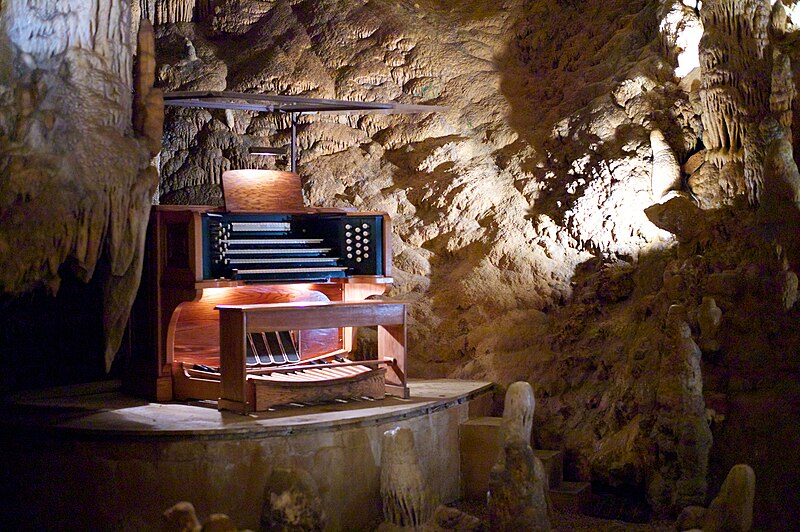- in Production by Bobby Owsinski
The World’s Largest Instrument Is Underground
One of the cool things about artificial reverb plugins is that they give you a sense of size and space, and that’s certainly sufficient for most modern mixing tasks. There’s nothing like being in a real space though, and some of the most compelling are large caves.
I’ve been to quite a few good ones, like Cathedral Cave, a chamber deep inside the rock of Gibraltar, and Oracle Cave on Malta, that are truly ethereal experiences. One I wasn’t aware of houses the largest instrument in the world, and that’s Luray Caverns in North Virginia which is home to the The Great Stalacpipe Organ (pictured below).

This may look like an organ, but it’s a mostly-natural percussion instrument that spans over 3 acres of the cave system and derives its name from “stalactite” and “pipe organ.” Even though it’s played with keys, the organ is technically classified as a percussion instrument because each key activates a rubber mallet that gently thumps a tuned stalactite. The results are soothing, immersive, and a one-of-a-kind sound.
The Great Stalacpipe Organ was designed in 1956 by Leland W. Sprinkle, who worked at the Pentagon as a mathematician and electronics scientist. According to Larry Moyer, the lead engineer of the organ, “Leland Sprinkle came through the caverns with his son on his fifth birthday. They would take a little rubber mallet and play a little song on the stalactites. And he got the idea of building an organ.”
It took over 3 years of tapping stalactites then comparing them to one of 13 English tuning forks to develop the sounds into a real instrument. But there’s a lot more to it than that. Says Moyer, “There’s miles and miles of cabling down here for it. The electronics, we build ourselves. There’s no, uh, great stalactite pipe organ store, so we can’t go buy parts for it.”
This instrument produces something that’s incredibly peaceful and beautiful. Have a listen for yourself.
Photo: Jon Callas – Flickr: Stalacpipe Organ at Luray Caverns

